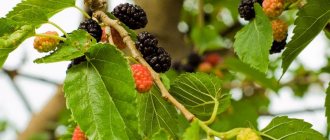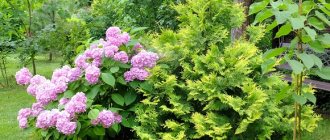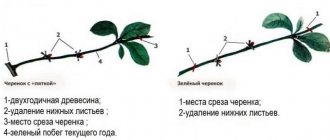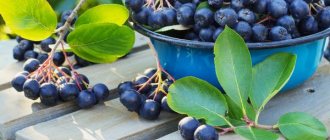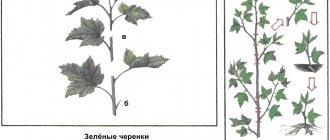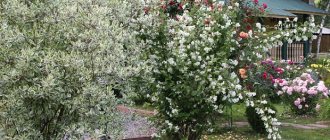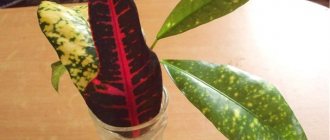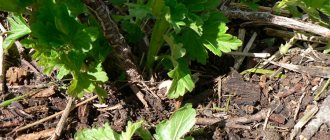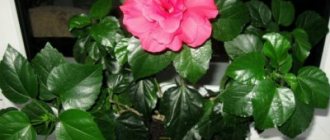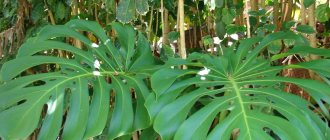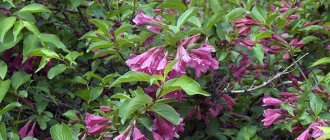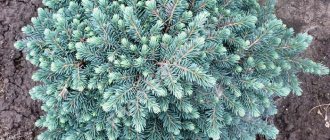9558
Although honeysuckle propagates by both seed and vegetative methods, cuttings are the most popular option for obtaining new seedlings of both ornamental and fruiting shrubs with blue edible fruits. To successfully propagate honeysuckle from cuttings in spring, early summer and autumn, you need to learn several rules in order to achieve the maximum percentage of rooting. With the right approach, you can get a whole garden of honeysuckle from one plant.
Vitamin harvest
What is honeysuckle
Honeysuckle is the type genus of the Honeysuckle family, which unites almost 200 different species, represented by creeping, climbing and erect shrubs. Currently, garden honeysuckle is most often grown, playing the role of an ornamental shrub that produces tasty and healthy berries. At the same time, climbing honeysuckle is used for vertical gardening.
The most popular are 2 types of garden honeysuckle: blue (blue) and edible honeysuckle.
The height of edible honeysuckle does not exceed 1 m. Blue honeysuckle reaches a height of 2–2.5 m and is a woody deciduous shrub with slightly curved erect stems.
Is it possible to propagate honeysuckle from seeds?
Propagation of honeysuckle by seeds
If you bought a honeysuckle bush, you should be patient. After planting, it will grow its root system for three whole years, and only then will it begin to bear fruit.
I was 14 years old when my parents planted two small bushes of honeysuckle varieties Blue Spindle (sweet and sour) and Blue Bird (slightly bitter) in their dacha. These bushes grew and delighted all of us, and then my children, with their gray berries.
Honeysuckle has been growing in our garden since the first year we moved into this house. The bushes were grown from seeds sent by a scientific company, but they turned out to be completely different from what I wanted. Today, out of twelve bushes, I have left only one - the Samorodon variety with slightly bitter round berries. But the bushes of the Blue Spindle and Cinderella varieties with sweet and sour long and large berries have been pleasing for about twenty years. The annual increase has become very small. The length of young branches is up to 10 cm. The time has come to renew the bushes.
I will not describe in detail the propagation of honeysuckle by seeds; it can be found in the literature on gardening - I will explain it as best I can.
Honeysuckle is a unique plant of its kind. Ripens earlier than other berries.
Propagated by green cuttings (cut at the moment between the beginning of setting berries and their ripening), lignified cuttings - in spring and autumn (I bury them in the ground at an angle of strictly 45°, otherwise the cuttings simply do not take root).
But the most interesting, although time-consuming, type of honeysuckle propagation is by seeds.
Seeds are sown in schools immediately after the berries ripen, otherwise they quickly lose their viability.
You can sow in the spring of next year, having previously stratified.
Honeysuckle seedlings from seeds almost never repeat the characteristics of the parent.
But honeysuckle is probably the only plant whose seedlings are always better than their parents in taste and size of fruit.
A year ago I read that you don’t have to uproot honeysuckle, but only cut it at the root, and then the plant will begin to grow from the root.
Last year, without risking trimming all the bushes, I removed branches from only one.
By autumn, young shoots grew up to 0.5 m in height. If everything works out as planned, and berries grow on these branches in 2014, it will be just great. Firstly, you don’t have to buy new planting material.
And it’s not a fact that the new varieties will suit me. Of course, it was possible to grow new bushes from cuttings, but I didn’t think about it before, but now a bush grown from a cutting will produce a harvest in five years.
T. Kurenko
vsaduidoma.com
How to plant honeysuckle
You can plant shrubs in open ground in spring, summer and autumn. But you should not plant in May and June, as intensive growth of shoots is observed at this time. If you plan to plant a shrub in the spring, then this must be done before the buds open. Please note that in honeysuckle they open quite early. Experienced gardeners advise planting shrubs in the fall, or rather, from the end of September to mid-October.
Honeysuckle grows best in a lighted low-lying swampy area, and the area should be reliably protected from the wind. It is desirable that the soil is loamy or sandy loam. If the soil is poor, it will first need to be fertilized. Add chalk or dolomite flour to overly acidic soil.
When purchasing a seedling, pay attention to the fact that it has a well-developed root system and that it has no damage or dry roots. Also, immediately before planting, pay attention to the condition of the crop. If necessary, remove broken stems and roots. If the roots are very long, shorten them to 30 cm.
The depth and diameter of the planting site must be at least 40 cm. If you plan to plant several shrubs, then maintain a distance of 1–2 m between them. When digging, throw the top nutrient layer of soil aside; in the future you will need to mix it with a bucket of humus , 300 g of wood ash, 0.1 kg of double superphosphate and 30 g of potassium sulfate. Pour the prepared mixture onto the bottom of the hole so that you get a mound on which to install honeysuckle in the future.
After preparing the hole, place the seedling in its middle, straighten the roots thoroughly, and then fill the planting site with loose soil. After planting, the root collar should be in the soil at a depth of 3–5 cm. Tamp the soil well, then pour a bucket of water under the honeysuckle. After the liquid has been absorbed, cover the surface of the soil with a layer of mulch.
How and when to collect cuttings?
You can grow honeysuckle from green, combined and already lignified shoots. They are collected at different times of the year. The time period will be extended from the end of March until the fall. Lignified ones are cut in the second ten days before the buds open, combined shoots (shoots with a particle of an annual branch) - after flowering in the last days of May or with the arrival of summer. Combined ones can be taken with 1-2 shoots, as shown in the figure.
Combined cuttings with 1-2 shoots
Their survival rate is 30% higher than that of lignified ones. The green young harvest is ready to ensure 100% survival rate when favorable growth conditions are created.
Branches collected in summer have a large supply of vitality to form a healthy and strong root system.
Planting at a later date (July-August), although it gives good results, does not ensure proper growth of the root system until the end of the growing season.
Collection rules:
- The lignified harvest, harvested in March, is cut into pieces 15-17 cm long.
- Combined branches collected after flowering should be 2 cm long at the base of the growing shoot.
- The strongest growths of the current year are suitable for propagation by green cuttings. Before you cut a branch, you need to bend it. If it bends well, but does not break, it means that it will not produce strong enough workpieces. They will not be able to quickly form a strong root system. A branch that breaks with a crunch is suitable for cutting cuttings. Planting material is taken from the central part of the shoot. The optimal length of the cuttings should be from 7 to 12 cm, each with 4 internodes, each node with a leaf and a bud. The cut on the bottom is made at an angle of 45°. The second cut is made straight above the upper bud, leaving 1.5 cm. The leaf is removed from the lower node. If the bark on a green branch has hardened a little, you can make a small cut at the bottom to speed up the formation of roots.
Video of an interesting way to root honeysuckle in open ground.
Before planting, the central and upper leaves are shortened by 1/2. This allows you to reduce evaporation and retain moisture in the shoot.
Rules of care
Growing and caring for honeysuckle is quite simple. Water the bush as needed, remove weeds, apply fertilizer and loosen the soil. Also carry out preventive treatments of shrubs against pests and diseases.
After planting in open ground for 3 years, hill the shrub high in the spring. Honeysuckle loves moderate watering, but in dry weather the plant requires abundant watering.
After harvesting, you need to feed the honeysuckle, trim the stems and water the bush in a timely manner. You will also need to treat the bush from diseases and pests, if they are present on it.
Honeysuckle is useful not only because it produces amazingly tasty fruits, but also for its decorative feature. And in order for it to retain these 2 properties for a long time, the shrub must be provided with proper care.
Principles for successful honeysuckle breeding
Due to their inexperience, many gardeners encounter some problems when growing honeysuckle. Having experienced failure once or twice, they become disillusioned with the culture and abandon the idea of developing it. It is not enough to provide complete care for the bush; you need to acquire high-quality planting material and understand the biological characteristics of the plant.
Having rooted honeysuckle once, in the future you can not know the grief of its departure and annually harvest a rich harvest of delicious berries. Edible and ornamental varieties are bred in the same way using the same methods. Successful reproduction depends on several factors:
- the landing site is chosen from the sunny side;
- For vegetative propagation, strong and young shoots that are not damaged by diseases and pests are selected;
- At least 4 different species are planted on the site for cross-pollination and increased yield. For example, sour, dessert, sweet or other varieties are placed nearby;
- The rooting of a young plant and the further development of the root system largely depends on the thermal regime, protecting the bush from bright sun and timely moisture. The best option would be to raise young animals in a greenhouse or greenhouse;
- To prevent plants from dying during transplantation, they must be sufficiently adapted and hardened. This usually happens 2 years after sowing.
It is optimal to grow young honeysuckle in a greenhouse.
If you adhere to all the rules for growing and propagating honeysuckle, then in a few years it will delight you not only with its external beauty, but also with tasty, healthy fruits.
Fertilizers
Many gardeners are interested in the question of how to feed honeysuckle so that it blooms beautifully and brings a bountiful harvest. For several years after planting, the plant does not need any feeding. Starting from the 3rd year, organic fertilizers should be applied once every few years.
Fertilize in late autumn by applying a composition of 0.1 kg of wood ash, 5 kg of compost and 2 tbsp. double superphosphate. This mixture is designed for 1 sq.m. soil.
Every year in the spring, before the buds open, feed the plant with ammonium nitrate, at the rate of 3 tsp. per 1 sq.m. plot. After harvesting, apply a solution of slurry under the bush, diluting it in a bucket of water in a ratio of 1 to 4.
Recommendations for obtaining a tasty honeysuckle harvest every year
Honeysuckle is a relatively unpretentious plant. And although the fruit bush is just gaining popularity in Russian gardens, it is highly valued by many summer residents for its decorative appearance and medicinal harvest with excellent taste characteristics. Before propagating and growing honeysuckle, so that the berries ripen on time and in large quantities, you need to take into account a few simple rules:
- For honeysuckle to bear fruit, it will need proximity to other edible varieties. Gardeners recommend planting at least 3 types of honeysuckle on a plot with different ripening periods.
- The bushes are planted in sunny areas.
- To attract pollinators, a group of seedlings is placed not in a row, but in a clump.
- In order to successfully organize propagation, and subsequently obtain productive bushes, choose a strong, actively growing adult shrub without signs of diseases for cuttings.
- Before planting in open ground, seedlings are hardened by placing containers with plantings on the site, first for 2 hours, then for 4-6 during the week.
- After 2-5 years of growth, honeysuckle is capable of producing shoots of the second generation. These are the summer branches of the second wave of growth, which begin to form from the apical buds after the berries are harvested. Their length is 12-15 cm, by the end of the season they are covered with bark, and the rudiments of future flowers are laid in the buds. During the winter cold they rarely freeze; in the next season they serve as an additional source of increased productivity. To enhance the wave of growth, gardeners organize feeding of honeysuckle after harvesting, in autumn and spring.
- Honeysuckle is a shrub with a branched crown. With the massive formation of shoots, the plant becomes too dense and the yield decreases. To avoid this, weak and damaged branches and root shoots are removed annually. Shortening is not carried out so as not to reduce the yield. After eight years of age, anti-aging pruning is organized, cutting off 3-4 shoots per stump annually.
Video with a detailed story about cuttings.
Cuttings of honeysuckle at home is a process that requires attention, but in most cases it ends successfully. Due to the plant's resilience and ability to quickly grow the root system, most of the collected cuttings take root. All that remains is to provide them with proper care and protect them from unfavorable conditions.
Fruiting
Honeysuckle begins to bloom and bear fruit quite early. The fruits ripen in late June or early July. Berries should be picked in a timely manner, as they quickly fall off the bushes, which is why you risk losing most of the harvest.
How do you know when it's time to harvest? The color of the berries becomes dark blue. If a honeysuckle variety with fruits that do not fall off grows on your site, then wait a week after ripening, and only then start picking berries.
If the berries quickly fall off, harvest in this way: spread a cloth under the bush and start shaking the fruits onto it. This procedure will help you collect ripe fruits.
The disadvantage of honeysuckle fruits is that they cannot be stored for a long time and are easily injured. Therefore, it is recommended to freeze them after harvesting or immediately begin preparing jam, compotes and other culinary masterpieces.
Generative reproduction
It is recommended mainly for propagating decorative honeysuckle, but it can also be used for gardening. Seeds are selected from the ripest, largest, most beautiful berries. You can sow them immediately, but they are also suitable for storage. Seeds that are 2-4 years old germinate well, then stratification is required.
Honeysuckle seeds are small, so they are buried only 0.5 cm into the ground. You can sow it in a box, cover it with film, but so that it does not touch the soil. The seeds will sprout in approximately 3 weeks. In the fall, leave the box to winter under the snow; honeysuckle, as a very cold-resistant plant, will not freeze.
Growing plants from seeds at home is quite difficult and time consuming. A gardener who decides to propagate honeysuckle using this method should take into account that the new plant will not be identical to the mother one. But if you want to grow a bush this way, then be prepared to spend a lot of effort to get the result.
Planting material is planted in mid-spring in small containers. Warm weather will help the seeds grow faster, and the first leaves will appear in August. Only after this can they be transplanted into the ground to a permanent place.
In addition, generative propagation can be carried out in the fall. The main thing is that the temperature is not below 1°C. In winter, the seedlings are stratified, and as a result, the strongest survive, which in the future will bear large, sweet fruits. Moreover, the plant’s immunity will increase several times.
This method is used as a last resort, since there is no guarantee that a plant grown from seeds will have the same properties: fruit size, taste, immunity to bacteria, etc. Many stores offer ready-made seeds in bags, but if you plan to obtain them yourself, read the following instructions.
How to get honeysuckle seeds from berries (three options):
- The largest and most ripe fruits are selected. They are manually squeezed, after which they are placed in a jar of water. Soon the seeds will settle to the bottom, and the pulp and peel will float to the surface. When this happens, the seedlings are dried and placed in a warm place until planting.
- The selected berries are ground on a sieve, and seeds are selected from the resulting mass. They are then washed with clean water and dried.
- Selected fruits are laid out on a material that absorbs moisture well, after which they are squeezed out and dried. Then the seeds are collected in a special bag and stored in a warm place.
You can carry out the planting procedure in the fall - the plant is able to develop even at a temperature of 1-3 degrees. The advantage of this option is natural selection. By spring, only the strongest representatives of the variety with strong immunity will remain.
The article examined the propagation of honeysuckle by cuttings, dividing the bush, seeds and layering. The method of cutting woody shoots and planting seeds is rarely used. The first has a poor rooting rate, and the second does not guarantee the preservation of the properties of the mother plant. In any case, all the described methods are easily applied in practice and can be tested even by a novice gardener.
Trimming
The first pruning should be carried out only 2–3 years after planting honeysuckle in open ground. In the future, the shoots do not need to be pruned if they have a normal growth rate and the bush itself is not thickened.
If you think the honeysuckle is too bushy, trim off a couple of the null branches growing straight out of the soil. Additionally, cut out all injured, damaged, dried out and short branches that take away the strength of the plant. Thin the bush inside for better penetration of sunlight.
Most of the fruits grow on annual shoots. For this reason, it is undesirable to shorten the shoots of the current year, since this procedure will negatively affect the amount of harvest. If the stems exhibit weak growth, then lightly trim their tips, but only if the bases of the shoots are strong enough.
If desired, remove last year's branches that bear little fruit. Remove any stems that grow low, as they interfere with normal tillage of the soil surface.
For old honeysuckle, perform anti-aging pruning by removing all old branches and stems, leaving only young shoots that grow from the stump.
In the spring, prune the bush to remove stem tips damaged by cold, and remove all injured and disease-damaged branches. After harvesting, prune if necessary to help maintain the shape of the bush.
Methods of propagation of honeysuckle
There are several vegetative methods:
- propagation by layering is suitable for bushes with strong lower annual shoots;
- cuttings are suitable for all types of honeysuckle; cuttings are prepared from spring to autumn;
- root shoots - shoots growing from a root adventitious bud (rarely formed);
- propagation of the plant at the age of 5-6 years by dividing the rhizome.
Growing from seeds is mainly done by breeders. Propagating honeysuckle in this way can lead to the loss of varietal characteristics in seedlings. This is due to the fact that the plant is cross-pollinated.
Cuttings
The method involves harvesting and germinating honeysuckle cuttings. Young green shoots of the current season and annual woody branches are suitable for this.
How to cut honeysuckle in summer or autumn:
- Select a fruiting branch that is 1 year old.
- Cut cuttings from it 10-12 cm long. Make cuts at an angle of 45°. Each cutting should have 2-3 internodes with dormant buds.
- Remove the leaves from the bottom and treat it with a stimulant (“Epin”, “Kornevin”). Cut the top leaves in half.
- Place the cuttings in water or a nutritious moist substrate (peat + sand) so that the internode is recessed in the substrate or water. Roots form on it.
- When the roots are 5-8 cm long, plant the plant in open ground or in a container.
In the first 3 weeks, the cuttings are kept in greenhouse conditions (warm, humid, diffused light) for rapid root germination. To create a greenhouse effect, cut plastic bottles are used.
Diseases and pests
Honeysuckle is resistant to many pests and diseases. But sometimes it is affected by reddish-olive spotting, powdery mildew, and tuberculosis. Drying and blackening of branches is also often observed.
All these diseases are fungal with the following symptoms:
- the bush begins to dry out, its stems become brown or black;
- the leaves turn yellow and fly off ahead of schedule.
It is extremely rare that honeysuckle is affected by cancer or viral diseases such as mosaic mosaic and leaf mottling. Remember, viral diseases cannot be cured.
Fungal diseases can be eliminated using fungicidal agents. It is important to periodically treat the plant against pests and diseases, in this case the risk of infection is minimized. This treatment must be carried out in the spring before intensive growth begins, as well as in late autumn before frosts (in this case, fungicides are used).
37 pests can harm honeysuckle, including:
- rose leaf roller;
- honeysuckle miners;
- honeysuckle mite, etc.
Reproduction
Honeysuckle propagation occurs by seed and vegetative methods. Each of these methods has its own disadvantages and advantages. For example, edible honeysuckle can be propagated by seeds, but keep in mind that this plant is cross-pollinated. For this reason, seedlings cannot retain the varietal characteristics of the parent crop. Usually, only breeders grow honeysuckle from seeds.
A 6-year-old bush can be propagated by dividing the bush. But keep in mind that this method is not suitable for bushes older than 15 years, since it will be difficult to divide the bush, even if you use an ax.
Gardeners usually practice only 2 methods of propagating honeysuckle, namely, the use of layering and cuttings.
Propagation of honeysuckle by seeds
If you plan to propagate honeysuckle by seeds, then our instructions below will be useful to you. Take a paper towel and then rub the ripe honeysuckle berries on it. Try to keep the distance between the seeds about 1 cm. Upon completion of the procedure, roll the paper into a roll and store it. If the seeds are kept in a room where room temperature is maintained, they do not lose their germination capacity for several years.
You can sow either freshly harvested seeds or from last year. Carry out the procedure in June, sow the seeds in moist soil, deepening the seeds only 0.1 cm. After this, take the container to a greenhouse or cover it with glass.
Check the substrate regularly, it should not be too dry. In about 20 days, the seedlings will sprout. In late autumn, transfer the container with seedlings to the garden if a frost-resistant honeysuckle variety was sown.
If you sowed the seeds in October-November, then immediately take the container with the seedlings into the garden. After the plants are a few cm high and their first leaf blades appear, plant them in a garden bed. Systematically water the plants, loosen them and remove weeds. After a year, plant the crops according to a 20 by 20 pattern. You will be able to harvest the first harvest in 3–4 years.
Leave for cultivation only those bushes whose taste of berries you like best. After this, transplant the seedling to a permanent place.
Propagation by cuttings
According to reviews from gardeners, it is possible to collect up to 200 cuttings from one tree. Harvest them in early spring before the buds open. For cuttings, choose only powerful annual branches with a diameter of at least 0.8 cm.
The length of the cuttings should be between 15–18 cm. They should be planted in a garden bed or in a greenhouse. Bury the cuttings 10 cm into the soil, but make sure that at least 2 buds remain above the surface. To speed up the emergence of the root system, it is recommended to cover the cuttings with film. Complete rooting should occur after a month.
Combined cuttings
Honeysuckle can be propagated using combined cuttings. After the bush fades in May-June, cut off its 1-year-old stem with this year's shoots growing on it. Please note that the cuttings must have a “heel” of a one-year-old stem from which these shoots grow.
Plant the cuttings in a prepared hole in the garden. Do not push the cutting into the soil deeper than 5 cm. Place a film cover over the bed. After this, water the cuttings moderately twice a day. A sure sign of rooting is the regrowth of the tops.
Propagation by green cuttings
In summer you can propagate the crop from green cuttings. For cutting, take green shoots of the current season, and harvest them at the end of intensive growth. Approximately this time falls at the beginning of June, when the berries turn dark blue.
The length of the harvested cuttings should be equal to a pencil. They need to be rooted using the same method as lignified cuttings, but make sure that the soil and air humidity are constantly high. To speed up root development, treat the lower sections of the cuttings with Heteroauxin. And next year, transplant the cuttings to a permanent place.
The process of propagation by layering
The easiest way to propagate honeysuckle is by layering. How to do it? In June, loosen the soil near the bush and lift it a little. Take 2-3 powerful 1-year-old stems growing in the lower part of the bush, then bend them to the surface of the soil and pin them in several places with wire. Then cover the stem with a layer of soil; its thickness should be within 5 cm.
Water this stem periodically throughout the season. The next season, in the spring, separate the rooted cuttings from the parent shrub, and then transplant it to a permanent place. In a few years, this cutting will turn into a full-fledged bush.
How to propagate honeysuckle by dividing the bush
For this purpose, it is necessary to use a shrub that is already 6 years old. Remove it from the ground before the buds swell in the spring or carry out the procedure in early autumn. Using a saw or pruning shears, divide the bush into several parts. Treat the cut area with a disinfectant. After this, plant the bushes in a new permanent location.
Do not divide bushes older than 6 years, as in this case there is a high probability of plant death.
Features of honeysuckle propagation
Honeysuckle reproduces by vegetative methods and seeds. During vegetative propagation, the beginning and end of the plant’s growing season are taken into account, because honeysuckle wakes up when there is still snow and ends development in July.
The timing depends on the chosen method:
- cuttings are carried out from the beginning of flowering to leaf fall;
- dividing the bush is carried out in early spring or autumn after the leaves fall;
- layerings are fixed in the soil in early spring or summer during the growing season;
- seeds - spring, summer, autumn.
When propagating by cuttings, optimal conditions are created for the formation of a strong root system - temperature +20...+25°C and humidity 90-95%.
The best varieties of honeysuckle
It's time to decide what kind of honeysuckle you want to grow in your garden. You can distinguish an inedible variety from an edible one using color. Edible varieties have dark blue berries with a bluish coating on the surface. The following honeysuckles are edible varieties:
- blue (blue);
- Altai;
- Kamchatka;
- Honeysuckle Turchaninova.
According to ripening time, varieties are divided:
- early ripening - the berries ripen in mid-June;
- mid-ripening - fruits ripen in the 3rd decade of June;
- late ripening - the fruits ripen at the end of June.
According to the height of the bush there are:
- low-growing - the height of the bush does not exceed 1.5 m;
- medium-sized - the size of the shrub is no more than 2 m;
The best varieties of honeysuckle are:
- The Giant's Daughter;
- Zest;
- Roxana;
- Sineglazka;
- Blue bird;
- Violet.
You can buy all these varieties on our website with delivery by Russian Post.
Useful properties of honeysuckle
Still unsure whether you should grow a plant on your site or is it better to pay attention to other shrubs? We invite you to familiarize yourself with the beneficial properties of the crop, thanks to which you will definitely understand that honeysuckle is a necessary shrub on your site!
Honeysuckle berries contain:
- succinic acid;
- Apple acid;
- lemon acid;
- oxalic acid;
- B vitamins;
- vitamin A;
- vitamin C;
- pectins;
- tannins;
- sucrose;
- fructose;
- glucose;
- galactose;
- potassium;
- iron;
- magnesium;
- phosphorus;
- sodium;
- iodine.
Such a rich chemical composition has a positive effect on increasing gastric secretion. In folk medicine, honeysuckle berries are used to treat constipation and diarrhea, stomach diseases, hypertension and anemia.
Honeysuckle berries have the following properties:
- restorative;
- diuretic;
- antiviral;
- laxative;
- choleretic;
- antibacterial;
- antiscorbutic;
- antioxidant;
- antifungal.
Contraindications
Despite the benefits of the product, sometimes its use can cause various health problems. Edible plant species have no contraindications. But it is still not recommended to consume berries in large quantities, as this can provoke muscle spasms, stomach upset and various skin rashes.
Now you know how to properly plant, grow and care for honeysuckle. We invite you to our online gardening plant store to order this amazing and useful shrub!
Previous:
- Currants - planting and care, the best varieties
- Willow of Babylon - description, planting and care
- Planting and caring for Forsythia Linwood Gold
- Strawberries - gardening tips, planting, care and best varieties
- Types of organic fertilizers and their use
